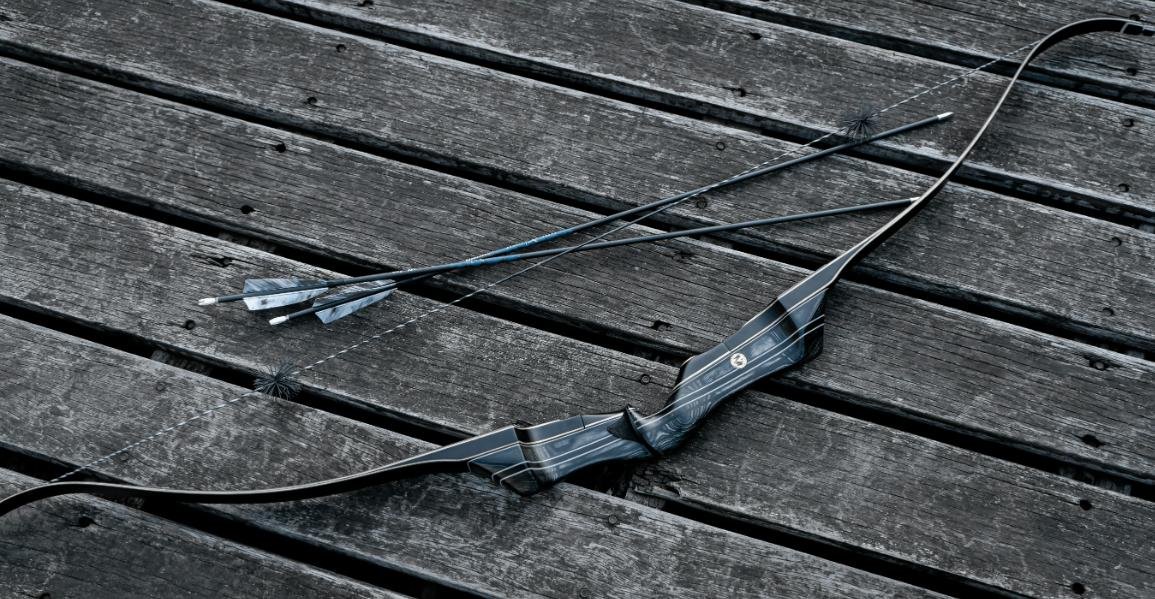Introduction to Compound Bows
Compound bows have revolutionized the sport of archery by integrating modern technology with traditional design principles. Unlike traditional bows, compound bows utilize a system of pulleys and cables, which allow for increased power and accuracy with less physical strain on the archer. This mechanized setup enables users to hold a lighter draw weight while still generating a significant amount of energy when the arrow is released. As a result, they can deliver arrows at high velocities, making them a favorable option for both hunting and target shooting.
One of the key advantages of compound bows is their versatility. They can be easily adjusted for different draw lengths and weights, accommodating a wide range of shooters, from novices to experienced archers. This adaptability is crucial in crafting a personalized shooting experience, allowing for greater precision and comfort. Furthermore, the engineered designs of compound bows often feature longer axle-to-axle lengths, providing added stability, which enhances overall accuracy, especially at longer distances.
The popularity of compound bows is also propelled by their efficiency in energy transmission. They are equipped with limb systems that store and release energy effectively, resulting in less vibration upon firing. This feature helps in making the shooting experience smoother and more enjoyable. Additionally, these bows tend to require less physical effort compared to traditional types, allowing archers to shoot more arrows with greater endurance and control. As archery continues to evolve, selecting the right compound bow becomes increasingly critical for optimizing performance in various activities such as competitive events and hunting expeditions.
Understanding Bow Specifications
When selecting the best compound bow, understanding various specifications is crucial to ensure optimal performance and comfort. Among the most important specifications to consider are draw weight, draw length, and axle-to-axle length.
Draw weight refers to the amount of force required to pull the bowstring to a full draw. This specification is pivotal as it directly influences the arrow’s speed and energy upon release. Typically measured in pounds, draw weight varies widely across available models. A higher draw weight can lead to faster arrow speeds, making it suitable for hunting large game. Conversely, a lower draw weight can enhance accuracy and ease of use, particularly for beginners. It is important to choose a draw weight that aligns with one’s physical capabilities and the intended use of the bow.
Next, draw length is the distance from the nocking point on the string to the pivot point of the grip—effectively the length of the draw before the arrow is released. This specification is critical for ensuring comfort and accuracy while shooting. A proper draw length ensures that the shooter can maintain an efficient and consistent shooting form. It is typically determined by measuring the wingspan and consulting standard draw length charts or by visiting a local archery shop for professional fitting.
Finally, axle-to-axle length refers to the measurement between the two axles that hold the bow limbs. This specification significantly influences maneuverability and stability. A shorter axle-to-axle length enhances portability and ease of use in confined spaces, making it an excellent choice for tree stand hunting. In contrast, a longer axle-to-axle length often contributes to increased stability and accuracy, particularly at longer distances, making it advantageous for target shooting.
Overall, careful consideration of these specifications—draw weight, draw length, and axle-to-axle length—plays a significant role in selecting the best compound bow for an individual’s needs.
Types of Compound Bows
When it comes to selecting a compound bow, it is vital to understand the various types available on the market, as each is designed with specific purposes in mind. The three primary categories of compound bows include target bows, hunting bows, and youth bows, each serving a distinct function suited to the preferences and skill levels of the archer.
Target bows are primarily crafted for accuracy and precision, making them ideal for target shooting in competitive environments. These bows typically have a longer axle-to-axle length, which enhances stability and control during the shot. Additionally, target bows often come equipped with features such as adjustable stabilizers and sight systems, which allow archers to make fine adjustments for optimal performance. An archer focused on developing their shooting skills and participating in competitions would benefit greatly from a target bow.
Hunting bows, on the other hand, are engineered for a balance of power and maneuverability. They tend to have shorter axle-to-axle lengths, enabling easy handling in varied outdoor environments. These bows are designed to deliver higher arrow speeds and allow the user to achieve maximum efficiency in their shooting range. When selecting a hunting bow, consider features like draw weight, let-off percentage, and cam system, as these aspects directly impact the bow’s performance in the field.
Youth bows cater specifically to younger archers or beginners entering the sport. These bows are designed to be lightweight and accommodating, often featuring adjustable draw weights to grow with the child’s skill level. When choosing a youth bow, it is crucial to prioritize safety and comfort, making sure the bow is manageable for the child to practice and develop their skills effectively.
In selecting the type of compound bow that suits your needs, it is essential to consider the intended use, skill level, and personal preferences. Understanding the unique features of each bow type will greatly enhance your archery experience.
Choosing the Right Draw Weight
Selecting the appropriate draw weight for a compound bow is crucial for any archer looking to enhance their shooting experience. The draw weight, which refers to the amount of force required to draw the bowstring back, can significantly affect both accuracy and overall shooting comfort. Understanding how to determine the right draw weight based on individual factors such as strength, skill level, and intended use is essential for optimal performance.
To begin, it is important to evaluate your physical strength. Generally, beginners may find a draw weight between 20 to 30 pounds to be manageable. As archers become more experienced and stronger, they can gradually increase the weight to 40 pounds or more, depending on their proficiency and comfort level. It is advisable for archers to test various draw weights before making a purchase. Most archery shops offer the opportunity to try out different setups, allowing individuals to gauge their comfort and control with each weight.
Your skill level also plays a significant role in determining your appropriate draw weight. Novice archers should start with a lighter draw weight to develop proper form and technique without the strain of heavier resistance. As archers refine their skills, increasing the draw weight can enhance muscle memory and shooting consistency. Additionally, consider the specific purpose of your archery endeavors; for instance, target shooting often requires different draw weights than hunting.
Ultimately, the ideal draw weight balances comfort and capability, ensuring that the archer can shoot accurately across various conditions. By exploring different draw weights and understanding personal abilities and objectives, archers can select a compound bow that optimally supports their performance and enjoyment in the sport.
Finding the Correct Draw Length
In the context of archery, selecting the appropriate draw length is crucial for achieving optimal shooting form and comfort. The draw length refers to the distance between the bowstring and the grip when the bow is fully drawn. An incorrect draw length can result in poor shooting habits, resulting in reduced accuracy and increased discomfort.
To measure draw length accurately, one can use a simple technique. Start by standing with your back to a wall and extending your arms sideways, just like a bird spreading its wings, ensuring your elbows are straight. Measure the distance from the tip of one hand to the tip of the other. This measurement, in inches, should then be divided by 2.5 to determine your ideal draw length. It can also be beneficial to test a few different bows and adjust the draw length settings, if possible, to find the most comfortable option.
Several factors should be considered when comparing different options for draw length. Users should keep in mind their individual body measurements, flexibility, and shooting style. For instance, an archer with longer arms may require a greater draw length for optimal performance compared to someone with a shorter wingspan. Additionally, personal comfort plays an integral role in choosing the right bow; an appropriate draw length will allow for better posture and reduced strain during shooting. It is crucial to prioritize comfort, as it directly influences overall performance and enjoyment in the sport.
By taking the time to measure and compare draw length, archers can ensure they select a compound bow that not only enhances shooting accuracy but also contributes to a positive and comfortable archery experience.
Budget Considerations
When selecting a compound bow, understanding budget considerations is crucial, as prices can vary significantly based on brand, features, and performance. Generally, the cost of compound bows ranges from approximately $300 to over $1,500. Entry-level models typically fall between $300 and $600, providing basic features suitable for beginners. However, they may lack advanced technology, resulting in shorter durability compared to higher-end options.
Mid-range bows, priced between $600 and $1,200, often incorporate improved materials and performance enhancements, making them suitable for intermediate archers. These models usually offer better adjustability, smoother draws, and more durability, allowing for a more tailored shooting experience. High-end compound bows, exceeding $1,200, feature the latest technology, higher-grade materials, and optimal performance capabilities. These premium offerings are designed for serious archers who require top-notch quality and customization.
When balancing quality with affordability, it is essential to assess your skill level and future aspirations in archery. Invest in a compound bow that meets your current needs while leaving room for growth. Additionally, consider purchasing a bow package, which often includes accessories such as sights, stabilizers, and release aids. This option can offer better value for your budget compared to buying each component separately.
Furthermore, do not hesitate to explore used or discounted models. Many reputable archery shops sell refurbished bows at a fraction of the original cost. However, ensure that the equipment has been properly inspected to confirm its functionality. Ultimately, prioritizing your budget while seeking a compound bow that meets your performance expectations will lead to a satisfying investment in your archery journey.
Brand and Model Selection
When it comes to selecting the best compound bow, brand reputation and model performance play a crucial role in the decision-making process. Several manufacturers have established themselves as leaders in the archery industry, consistently producing high-quality bows that cater to a range of skill levels and preferences. Notable brands include Bowtech, Mathews, Hoyt, and Bear Archery, each offering unique features tailored to improve accuracy, speed, and ease of use.
Bowtech, for instance, is renowned for its innovative cam systems that enhance arrow speed and reduce noise, appealing to both novice and experienced archers. Mathews bows are celebrated for their exceptional craftsmanship and smooth draw cycle, making them popular among competitive shooters. Hoyt is often favored for its durability and excellent vibration dampening systems, while Bear Archery is known for delivering high performance at a more accessible price point.
When evaluating specific models, it is beneficial to consider user reviews and performance ratings. For example, the Bowtech Revolt X has received accolades for its adjustable draw length and peak weight, providing versatility for hunters. Mathews V3 is often praised for its compact design and lightweight feel, making it suitable for elevated hunting scenarios. Hoyt’s RX-5 is noted for its impressive speed and accuracy, while Bear Archery’s Cruiser G2 is recognized for its adaptability, fitting both youth and adults alike.
Before making a final decision, potential buyers should consider their own skill level, intended use, and personal preferences. Trying out different models at a local archery shop can provide valuable insights into which bow feels most comfortable and matches the archer’s style. Careful consideration of reputable brands and well-reviewed models will ultimately guide enthusiasts toward a compound bow that meets their needs effectively.
Importance of Testing the Bow
When it comes to purchasing a compound bow, physically testing the bow before making a commitment is critical. Unlike other equipment, the fit and feel of a bow can significantly influence your performance and enjoyment of archery. A thorough testing process allows prospective buyers to gauge various factors, including comfort, draw weight, and overall handling.
One of the primary benefits of testing different bows is identifying the most suitable draw length. A bow that fits you correctly should allow for a natural stance and smooth release without straining your shoulders or back. As you test the bow, pay attention to how the grip feels in your hand; a comfortable grip can vastly improve your shooting accuracy. Experience tells us that even subtle differences in grip shape can lead to notable differences in consistency and performance over time.
Another essential aspect of testing compound bows is assessing draw weight. Adjusting the draw weight to match your strength should be smooth and manageable. Archers should look for a bow that provides resistance appropriate to their skill level and shooting experience. A common recommendation is to start at a lower weight and gradually increase it as proficiency improves. During the testing phase, it’s advisable to shoot several arrows at varying distances to evaluate how the bow performs under different conditions and your level of fatigue.
In addition to these technical aspects, psychological comfort is also vital. Taking the time to shoot a few different bows can build confidence in your selection process. Engaging with knowledgeable staff or fellow archers during your testing phase can also provide invaluable insights. Overall, the process of testing various compound bows is not merely about finding a tool but rather investing in your growth and satisfaction as an archer.
Conclusion and Final Tips
Choosing the best compound bow requires a thorough evaluation of multiple factors to ensure that the selected equipment aligns with the user’s specific needs and preferences. Throughout this comprehensive guide, we have delved into the essential aspects of compound bows, including draw weight, length, and cam systems. Understanding these elements is crucial, as they directly affect the overall performance and shooting experience.
As potential buyers consider their options, it is advisable to first assess the purpose of their archery practice. Whether for hunting, target shooting, or recreational purposes, identifying the intended use will help narrow down choices and focus on the appropriate specifications. Additionally, it is beneficial to visit local archery shops where individuals can physically handle different models. This hands-on experience will provide a better understanding of how the bow feels and performs, which is vital for a successful purchase.
Another important tip is to prioritize quality over cost. While budget constraints are a reality, investing in a well-made compound bow can significantly enhance performance and longevity. Furthermore, seeking expert advice from experienced archers or instructors can prove invaluable in making an informed decision. They may offer insights on brands known for reliability and innovation, helping to steer buyers towards the optimal choice.
Lastly, after acquiring the new compound bow, commitment to consistent practice cannot be overstated. Continual honing of archery skills not only improves accuracy but also builds confidence with the equipment. Engaging with local archery communities can also provide opportunities for additional learning and development. By following these guidelines and maintaining a focus on practice, archers can elevate their skills and fully enjoy the benefits of their chosen compound bow.


